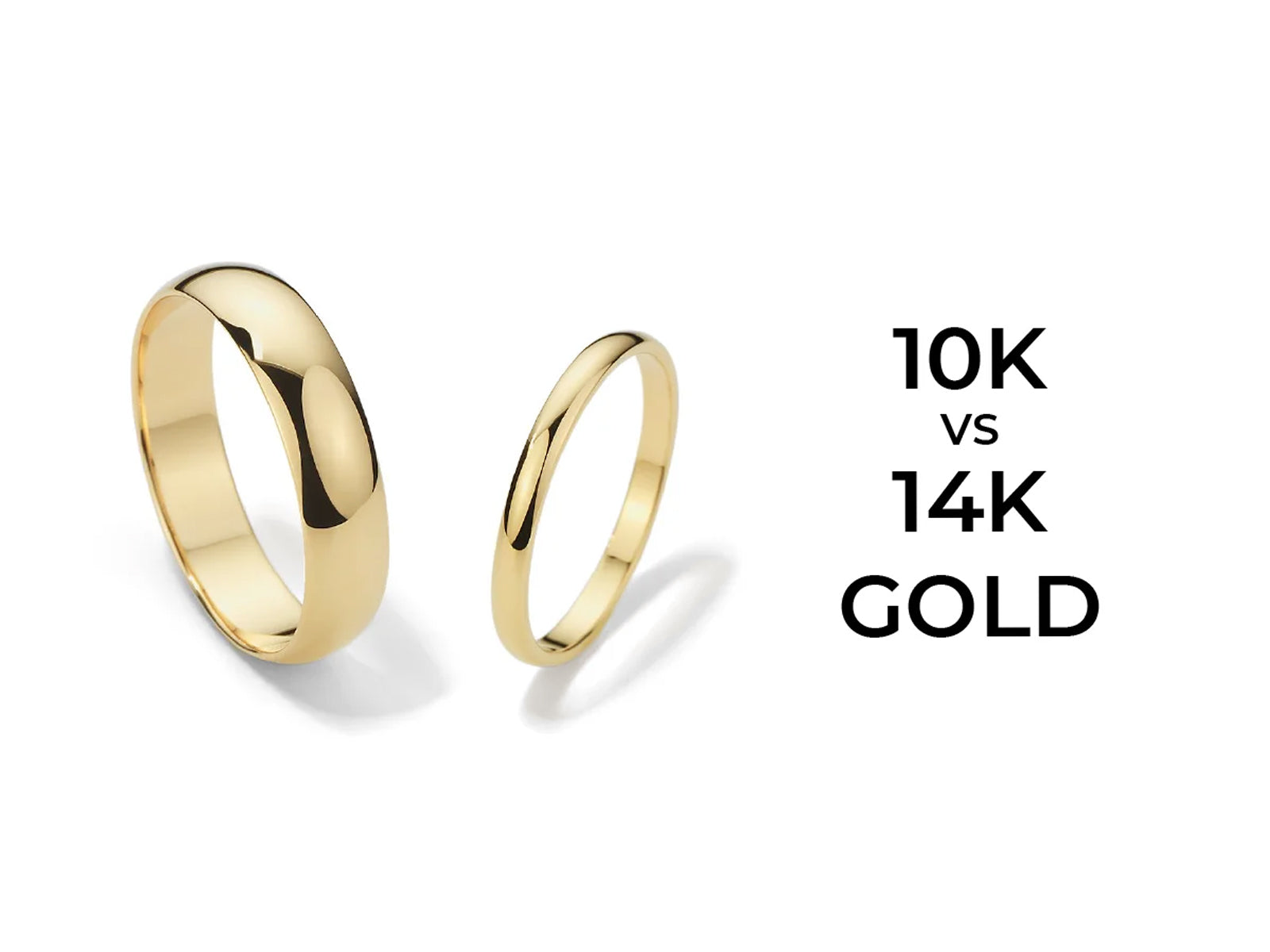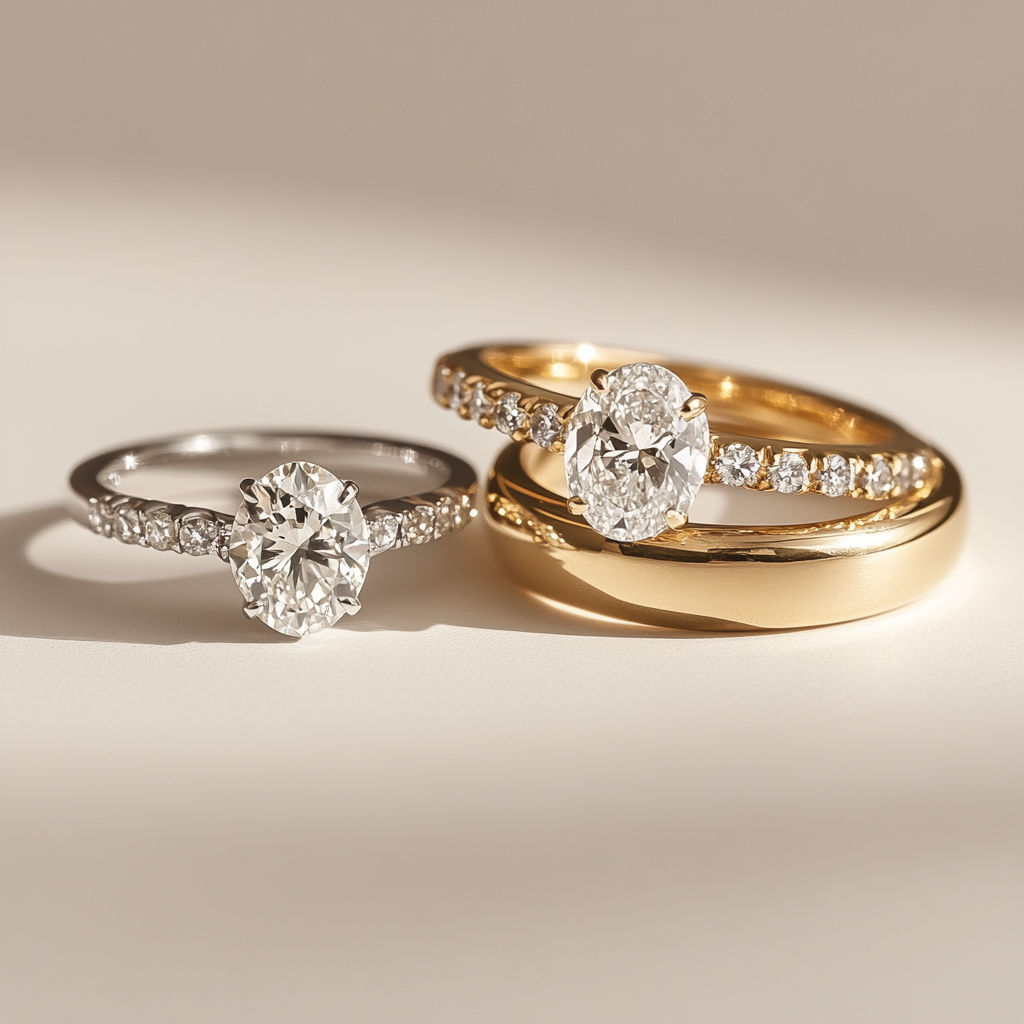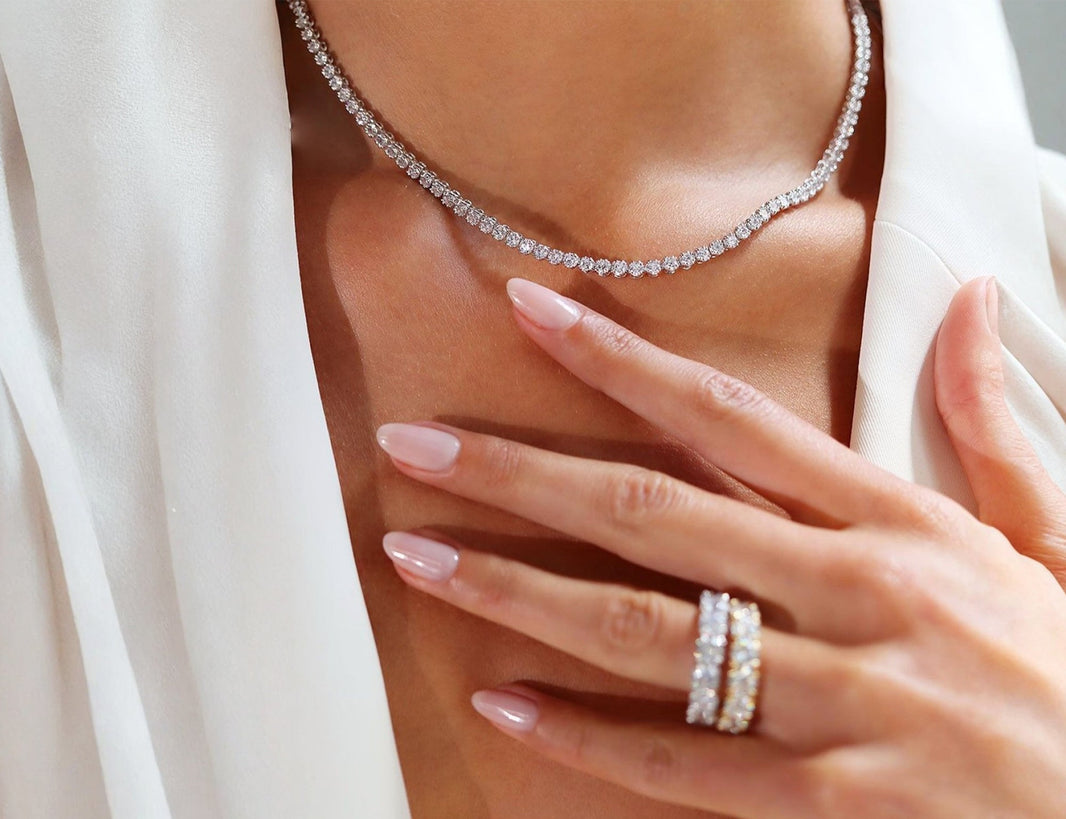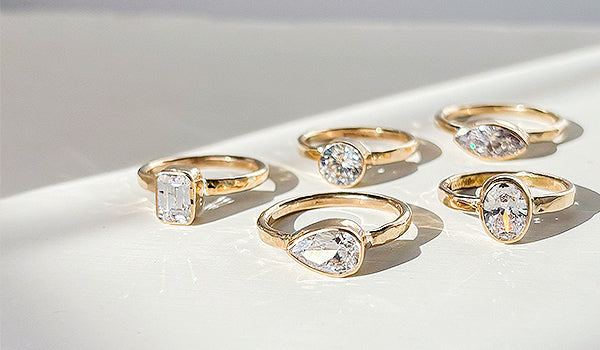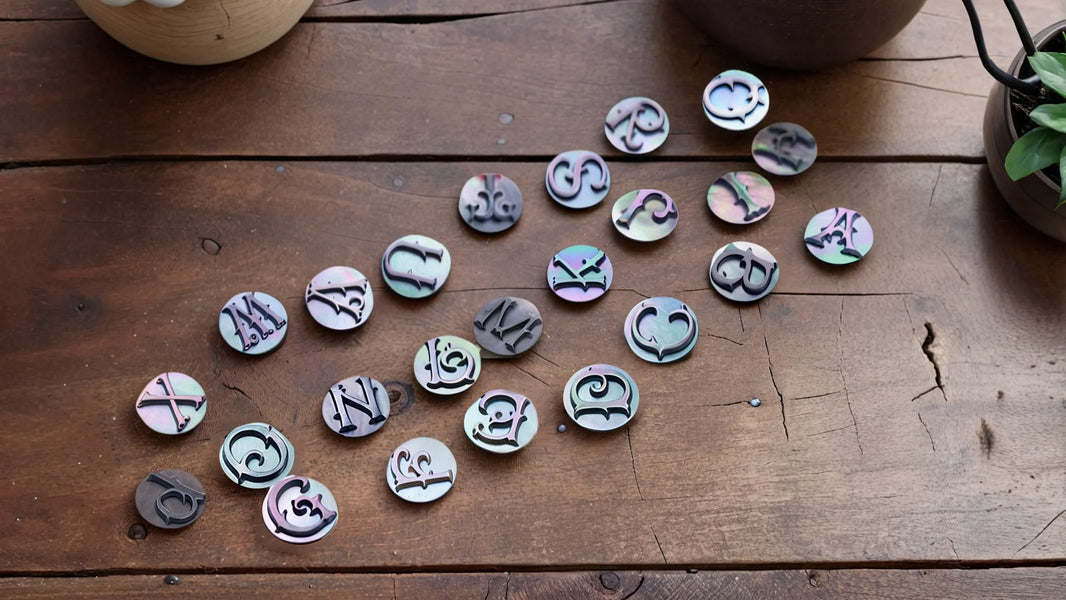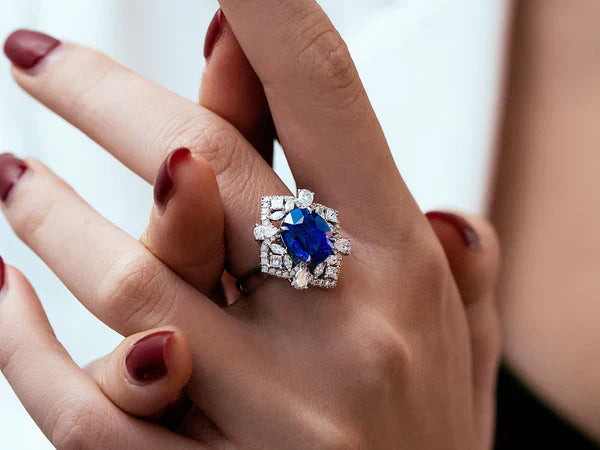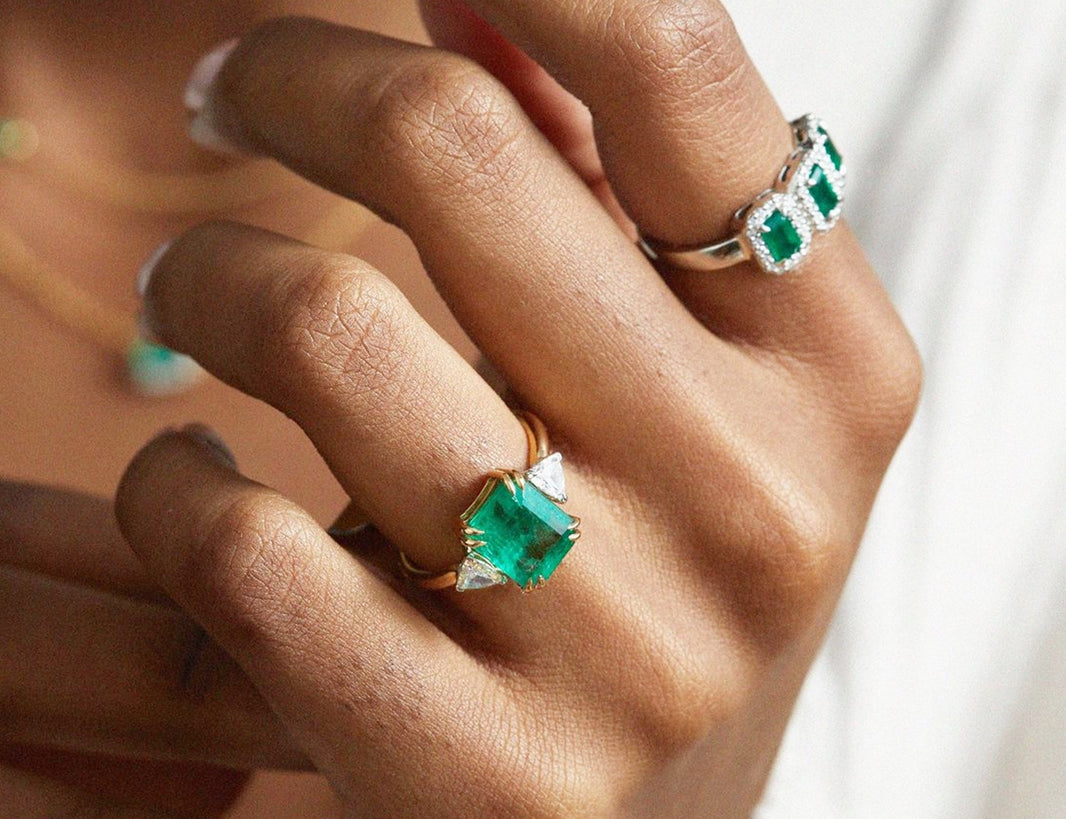Les bijoux en or existent en différents degrés de pureté, les 10 carats et 14 carats étant des choix populaires pour les bijoux fins comme les boucles d'oreilles en diamant, les bracelets rivière et les bagues de fiançailles . La différence entre ces deux options influence tous les aspects, de la couleur et de la durabilité à leur prix et à leurs propriétés hypoallergéniques. Lorsque vous choisissez entre l'or 10 carats (41,7 % d'or pur) et l'or 14 carats (58,3 % d'or pur) pour vos puces d'oreilles en diamants de laboratoire, vos bagues en saphir ou vos bagues de fiançailles en moissanite , votre choix aura un impact sur l'apparence et la performance de vos bijoux. Le bon choix dépend en fin de compte de vos préférences personnelles, de votre style de vie, de votre budget et de la fréquence à laquelle vous prévoyez de porter vos bijoux en or.

Types de bijoux en or à connaître avant d'acheter
Les bijoux en or se présentent sous différentes formes et degrés de pureté . L'or pur (24 carats) est trop mou pour être porté au quotidien ; on le mélange donc à d'autres métaux pour créer des alliages. Les bijoux en or les plus courants sont :
- Or 10 carats : 41,7 % d'or (10 des 24 composants), l'option la plus résistante pour un usage quotidien. Vendu entre 400 et 600 $ l'once (prix de 2023), il s'agit du bijou en or le moins cher du marché et du plus faible carat autorisé à la vente aux États-Unis. Idéal pour un style de vie actif et à porter au quotidien.
- Or 14 carats : Contient 58,3 % d'or véritable (14 sur 24), ce qui offre le meilleur rapport résistance/teneur en or. Il coûte environ 700 à 900 $ l'once et est l'une des bagues de fiançailles et des bijoux de qualité les plus populaires en Amérique du Nord. Il est résistant au ternissement et convient aux peaux sensibles.
- Or 18 carats : 75 % d'or pur (18 parts de 24), offrant une couleur jaune plus profonde, mais une résistance moindre. Il coûte environ 900 à 1 200 $ l'once et est très prisé sur les marchés européens et asiatiques, ainsi que pour les bijoux de luxe portés lors d'occasions spéciales.
Les couleurs de l'or diffèrent également en fonction des métaux ajoutés à l'or pur :
- Or jaune : Couleur classique de l'or en mélangeant de l'or avec du cuivre et du zinc dans des proportions spécifiques pour lui donner un aspect antique chaleureux.
- Or blanc : fabriqué en ajoutant des métaux blancs comme le palladium ou le nickel (bien que le nickel soit progressivement abandonné pour des raisons d'allergie). Il est presque toujours plaqué rhodium pour lui donner un aspect blanc argenté, et doit être replaqué tous les 1 à 2 ans pour conserver sa couleur.
- Or rose : Obtenu en augmentant la proportion de cuivre (généralement 22 à 25 %), il produit une couleur rosée profonde qui gagne en popularité grâce à sa beauté délicate, romantique et désuète. Il est intéressant de noter que l'or rose ne ternit pas aussi visiblement que les autres ors, mais fonce avec le temps.
Tous les niveaux de pureté offrent des avantages différents en fonction de la richesse de la couleur, de la durabilité, de la résistance au ternissement, de la propriété hypoallergénique et du prix.
Pourquoi l'or 10 carats pourrait être votre choix parfait
L'or 10 carats présente de nombreuses caractéristiques avantageuses qui en font un bon choix à considérer pour votre prochain achat de bijoux :
- Sa résistance accrue le rend parfaitement adapté à un usage quotidien, en particulier pour les bagues délicates et les chaînes faibles qui doivent résister à la tension quotidienne sans se plier.
- Un prix sensiblement inférieur a tendance à vous faire économiser 30 à 50 % par rapport à l'or 14 carats , vous permettant de constituer une collection plus grande pour le même montant d'argent.
- La couleur or plus claire crée un look moins dramatique que certains aiment pour les bijoux décontractés ou pour compléter certains tons de peau.
- Idéal pour les pièces tendance que vous pourriez souhaiter remplacer au fur et à mesure que les tendances changent, afin que vous puissiez avoir plus de liberté pour mettre à jour votre collection.
- Toujours hypoallergénique pour la plupart des gens, mais contient plus de métaux d'alliage que l'or à carats plus élevés.
Cependant, l'or 10 carats présente certaines limites à prendre en compte :
- Techniquement de moindre valeur en cas de faible teneur en or (41,7 % d'or) que de teneur élevée en carats.
- Risque accru de ternissement au fil du temps, surtout si les bijoux entrent souvent en contact avec des produits chimiques ou de l'eau.
- Produit des réactions sur les personnes ayant une peau extrêmement délicate en raison du taux plus élevé de teneur en métal allié.
- Valeur inférieure à revendre si jamais vous souhaitez vendre ou mettre à niveau plus tard.
- Moins de prestige auprès de certains amateurs de bijoux qui apprécient les produits à plus forte teneur en or.
Pourquoi l'or 14 carats offre une valeur supérieure
L'or 14 carats offre des avantages convaincants qui en font le premier choix pour les bijoux haut de gamme :
- Les couleurs chaudes et riches confèrent aux pièces un aspect doré classique que la plupart des gens associent aux bijoux de luxe, ce qui leur permet de se démarquer davantage.
- La durabilité de l'acier associée au poids du métal précieux (58,3 % d'or réel) signifie que les pièces durent des générations sans jamais perdre leur éclat.
- Moins susceptible de se décolorer ou de s'assombrir avec l'âge, moins d'entretien sera donc nécessaire pour garder vos bijoux étincelants.
- Plus doux pour les peaux sensibles grâce à la teneur en or ajoutée et à la réduction des irritants potentiels provenant des métaux d'alliage.
- Une plus grande valeur de revente si jamais vous décidez de vendre ou d'échanger vos pièces, c'est donc un investissement à long terme plus précieux.
L'or 14 carats présente cependant des inconvénients :
- Son prix est supérieur à 10 000 $, il est donc hors de portée de certains budgets, en particulier pour les articles ou ensembles plus volumineux.
- Pas encore aussi pur que l'or 18 carats ou 24 carats pour les personnes qui désirent la teneur en or la plus élevée possible dans leurs bijoux.
- Pas aussi durable que le 10k, ce qui pourrait être un problème pour les modèles ultra-fins ou délicats.
- Il pourrait être trop habillé pour des tenues ou des styles plus décontractés.
- Doit être plus soigné que d'autres métaux comme l'acier inoxydable ou le titane lorsqu'il est utilisé pour des activités.

Or 10 carats vs or 14 carats : ce que vous devez savoir
Lors du choix entre des bijoux en or 10 carats et 14 carats, plusieurs facteurs importants entrent en jeu : leur apparence, leur portabilité et leur valeur. Les deux options présentent des caractéristiques distinctes qui les rendent adaptées à différents goûts et usages.
| Fonctionnalité | Or 10 carats | Or 14 carats |
| Teneur en or | 41,7 % d'or pur | 58,3 % d'or pur |
| Couleur | Aspect plus clair, jaune pâle | Ton jaune plus riche et plus chaud |
| Durabilité | Plus résistant aux rayures et aux bosses grâce à une teneur en alliage plus élevée | Modérément durable mais plus sujet aux rayures que le 10k |
| Résistance au ternissement | Peut ternir plus rapidement en raison de la teneur plus élevée en autres métaux | Meilleure résistance au ternissement avec moins de décoloration au fil du temps |
| sensibilité cutanée | Risque accru de réactions allergiques en raison de la teneur plus élevée en nickel/cuivre | Risque moindre de réactions allergiques, meilleur pour les peaux sensibles |
| Prix | 20 à 50 % moins cher que l'or 14 carats | Plus cher en raison de sa teneur en or plus élevée |
| Poids | Plus léger en raison d'une densité d'or plus faible | Légèrement plus lourd avec les mêmes dimensions |
| Meilleures utilisations | Bijoux de tous les jours, bijoux pour enfants, modes de vie actifs, achats soucieux de leur budget | Bagues de fiançailles, bijoux fins, pièces de famille, cadeaux |
| Valeur de revente | Valeur de revente inférieure | Valeur de revente plus élevée et meilleur investissement |
Alors que l'or 10 carats offre une durabilité supérieure et un prix plus abordable pour un usage quotidien, l'or 14 carats offre cette apparence riche et classique et une meilleure longévité qui le rend idéal pour les pièces spéciales destinées à durer des générations.
Bien que l'or 10 carats résiste mieux aux rayures et à la flexion que l'or 14 carats, ce qui le rend parfait pour les bagues fines et les chaînes délicates, l'or 14 carats conserve sa couleur plus longtemps sans ternir et provoque moins de réactions allergiques sur les peaux sensibles .
L'option 10 carats permet de réaliser des pièces plus grandes à moindre coût grâce à sa teneur en or plus légère, mais l'or 14 carats a plus de prestige et conserve une valeur de revente nettement meilleure au fil du temps, ce qui justifie souvent la prime de prix de 20 à 50 % pour les bagues de fiançailles et les bijoux de famille.
Que devez-vous prendre en compte lors du choix entre l’or 10 carats et 14 carats ?
Votre style de vie, votre budget et vos préférences personnelles jouent un rôle crucial pour déterminer si l’or 10 carats ou 14 carats est le bon choix pour vous.
L'or 10 carats pourrait être votre meilleure option si :
- Vous menez une vie active ou travaillez fréquemment avec vos mains
- Vous faites vos achats avec un budget plus serré mais vous voulez quand même de vrais bijoux en or
- Vous achetez des bijoux pour un usage occasionnel ou pour les plus jeunes
- Vous préférez des pièces plus durables qui résistent aux rayures et à la flexion
- Vous achetez des bijoux fantaisie que vous pourriez remplacer au fur et à mesure que les tendances changent
L'or 14 carats pourrait être plus approprié lorsque :
- Vous avez une peau sensible qui réagit à des quantités plus élevées de cuivre ou de nickel
- Vous souhaitez des bijoux avec une couleur or plus riche et plus traditionnelle
- Vous achetez des pièces importantes comme des bagues de fiançailles ou des objets de famille
- Vous prévoyez de porter les bijoux quotidiennement mais ne les soumettez pas à des activités brutales
- Vous considérez la valeur à long terme et le potentiel de revente
Si vous privilégiez l'accessibilité et la longévité, l'or 10 carats offre un excellent rapport qualité-prix au quotidien . Si vous recherchez une couleur d'or plus profonde, moins de risques d'allergies et un meilleur investissement à long terme, l'or 14 carats est la meilleure option . Pour des pièces uniques qui dureront des générations, le coût supplémentaire de l'or 14 carats est largement justifié, mais l'or 10 carats reste une option viable pour les pièces portées fréquemment ou susceptibles d'être remplacées plus souvent.
La différence de prix est importante : préparez-vous à payer environ 50 % de plus pour le même article en or 14 carats qu'en or 10 carats. Une bague bon marché passera de 300 $ en or 10 carats à 450 $ en or 14 carats, et un collier simple passera de 200 $ à 300 $. La différence est encore plus marquée pour les articles plus volumineux : un bracelet en or 10 carats à 800 $ peut facilement atteindre 1 200 $ ou plus en or 14 carats.
Pour certains types de bijoux, n'oubliez pas que les colliers et les boucles d'oreilles sont généralement moins sollicités ; l'or 14 carats est donc un bon choix. Les bagues et les bracelets sont soumis à une pression quotidienne plus importante ; la résistance de l'or 10 carats peut donc s'avérer utile. Par exemple, les colliers et les boucles d'oreilles en or blanc sertis de diamants de laboratoire sont moins sollicités ; l'or 14 carats est donc un bon choix, car il est magnifique et résistant. En revanche, un bracelet tennis et des bagues en or blanc 14 carats sertis de diamants de laboratoire sont plus sollicités au quotidien ; l'or 10 carats peut donc être une excellente option, car il est durable.
Gardez également à l’esprit l’endroit où vous vivez : l’or 14 carats résiste mieux au ternissement dans un climat humide , mais dans les climats arides, vous ne remarquerez peut-être pas beaucoup de différence dans la façon dont les métaux mûrissent.

Trouvez l'or idéal pour vos bagues en diamants de laboratoire et en moissanite
Si vous êtes actif ou que vous surveillez votre budget, l'or 10 carats pourrait être votre meilleure option : il est plus résistant, plus abordable et résiste bien au quotidien. Si vous recherchez une couleur plus intense, moins d'allergies, ou si vous achetez un bijou spécial comme une bague de fiançailles ou un bracelet rivière serti de diamants synthétiques, l'or 14 carats vaut largement son prix. Tenez compte de la fréquence à laquelle vous porterez votre bijou, de votre sensibilité cutanée et de son utilisation quotidienne ou pour une occasion spéciale . En choisissant le bon or, votrecollier en diamants synthétiques ou votre bague en moissanite sera non seulement magnifique aujourd'hui, mais le restera pendant de nombreuses années .


